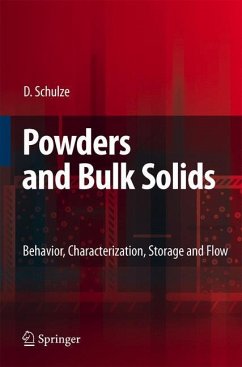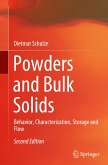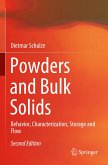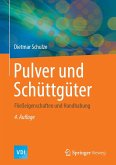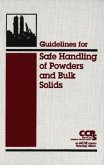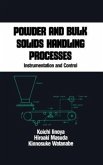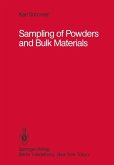The book concentrates on powder flow properties, their measurement and applications. These topics are explained starting from the interactions between individual particles up to the design of silos. A wide range of problems are discussed - such as flow obstructions, segregation, and vibrations. The goal is to provide a deeper understanding of the powder flow, and to show practical solutions.
In the engineering community the handling of powders and bulk solids is called bulk solids technology being, at least in Germany, part of mecha- cal process engineering. Process engineering involves study of the change and transformation of material properties. If mechanical processes are used for this transformation, the engineering discipline is called mechanical process engineering. The best known unit operations of mechanical pr- ess engineering are grinding, agglomeration, mixing, and separation. Due to the mechanical treatment, the particles - either single particles or a c- lection of particles - increase in value. To profit from this value increase industry and academia perform research and development. When handling bulk solids, e. g. storing, dosing and conveying, no value increase can be achieved, because the material properties are not changed. What can be achieved is "at most" the elimination of problems which is less interesting research and development compared to the development of new products or processes with the chance to obtain a patent. A silo for the intermediate storage of bulk solids often seems to be only a single, unimportant element for the realization of a larger process. Bulk solid is filled into the silo continuously or discontinuously and discharged later at predetermined points of time in desired quantities. That is not - ways unproblematic. The known problems of arching and ratholing can lead to irregular discharge or complete blockage.
In the engineering community the handling of powders and bulk solids is called bulk solids technology being, at least in Germany, part of mecha- cal process engineering. Process engineering involves study of the change and transformation of material properties. If mechanical processes are used for this transformation, the engineering discipline is called mechanical process engineering. The best known unit operations of mechanical pr- ess engineering are grinding, agglomeration, mixing, and separation. Due to the mechanical treatment, the particles - either single particles or a c- lection of particles - increase in value. To profit from this value increase industry and academia perform research and development. When handling bulk solids, e. g. storing, dosing and conveying, no value increase can be achieved, because the material properties are not changed. What can be achieved is "at most" the elimination of problems which is less interesting research and development compared to the development of new products or processes with the chance to obtain a patent. A silo for the intermediate storage of bulk solids often seems to be only a single, unimportant element for the realization of a larger process. Bulk solid is filled into the silo continuously or discontinuously and discharged later at predetermined points of time in desired quantities. That is not - ways unproblematic. The known problems of arching and ratholing can lead to irregular discharge or complete blockage.
Aus den Rezensionen: "... Im ersten Teil, der etwa 250 Seiten umfasst, gelingt es dem Autor durch anschauliche Abbildungen und eine verständliche Darstellung, dem Leser einen tiefen Einblick in die Schüttguttechnik zu geben. ... Trotz dieser Ausführlichkeit ... bleibt das Buch durch seine klare und übersichtliche Struktur gut lesbar. Im zweiten Teil ... fließen die ... praktischen Erfahrungen des Autors ein ... Das ... Ziel, einem breiten Leserkreis eine verständliche Einführung in die Welt der Schüttguttechnik zu geben ... wird voll und ganz erreicht. ... Es ist seit langem das beste Buch ..." (R. Schmitt, in: Chemie Ingenieur Technik, April/2010, Vol. 82, Issue 4, S. 553 f.)

